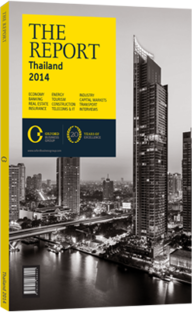Changing priorities: Coal is set to take a greater share of the country’s energy mix
In 2013, Thailand went from a country increasingly wary of coal to one actively pursing it for power generation. Late in the year, the Energy Policy and Planning Office said that it would be updating its Power Development Plan (PDP), and that coal would play a larger role in the country's energy future than was outlined in the previous version of the PDP.
With oil and liquefied natural gas prices high, and domestic natural gas reserves on the decline, coal is needed to take the edge off of prices and keep the cost of energy from choking off growth. Increased hydropower from neighbouring countries and the development of nuclear power are also seen playing a role in meeting future power demand, but coal, given its abundance and low cost, is considered vital.
Previous Experience
Coal has always been a major part of Thailand's power equation and has provided the country with a significant, steady base of energy; Coal and lignite have been providing around 20% of total power generation since the mid1980s. Although its respective share of the energy mix has stayed largely constant, the total volume of coal used has increased over time.
In absolute terms, coal and lignite produce 6.5 times more electricity in Thailand in 2013 than they did in the mid-1980s. Because of this growth, Thailand has become increasingly reliant on imported coal, as its local production has stagnated at around 25m tonnes per year, while consumption is over 41m tonnes per year. Furthermore, the country’s coal reserves were never particularly large, and now the domestic resources are running out. Thailand is down to its last 1bn tonnes of proven reserves, with only four mines continuing to produce. Imported coal currently provides around 8% of the country's energy; however, by 2030, imported coal will likely provide as much as 21% of Thailand's energy needs.
Thailand currently has five coal-fired power stations. Mae Moh, which is by far the largest, is owned by EGAT and has a capacity of 2400 MW. Its fuel comes from the nearby Mae Moh lignite mine. The BLCP power plant at Map Ta Phut is an independent power producer that has a 25-year offtake agreement with EGAT and is rated at 1434 MW. The country also has three small power producers, which generate a total of 190 MW.
Environmental Concerns
The PDP calls for the construction of at least six new coal power plants to generate 4400 MW of the 55,000 MW of new capacity needed by 2030. However, the public has been actively resisting the building of some new plants. Through 2013 and early 2014, villagers around a proposed coal-fired plant in Krabi have been protesting actively. In addition to concerns about damage to the environment and the eco-tourism industry, the locals claim that an earlier plant in the area, which stopped generating in 1995, caused health problems. However, the government insists that coal is a cheap and clean energy source, and is embarking on an education campaign to convince residents that coal is a sensible choice, especially when new technologies are used to reduce emissions.
Power Imports
Thailand is not only developing coal power locally, but it is also seeking to purchase it from neighbouring countries. The Hongsa power station in Laos is being developed by Ratchaburi Electricity Generating Holding (40%), Banpu Power (40%), and Lao Holding State Enterprise (20%). It is rated at 1878 MW, but will export 1473 MW to EGAT. In Myanmar, the Mai Khot power station is being built and should be operational in 2017. The plant, which is being developed by Italian-Thai Development and EGAT, is rated at 405 MW and will sell 369 MW to Thailand. As with projects in Thailand, the Hongsa and Mai Khot mines have faced resistance from residents who are affected by the project.
The sense has long been that Thailand would reduce its use of coal over time and that other sources of energy would take its place; however, recent ongoing activity has suggested otherwise.
You have reached the limit of premium articles you can view for free.
Choose from the options below to purchase print or digital editions of our Reports. You can also purchase a website subscription giving you unlimited access to all of our Reports online for 12 months.
If you have already purchased this Report or have a website subscription, please login to continue.

